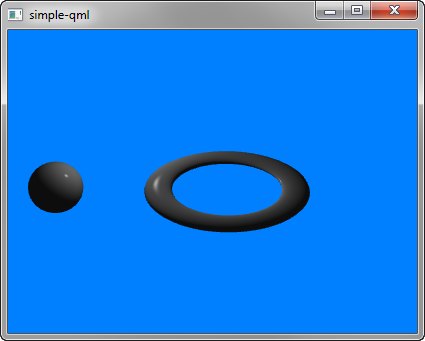
简单 演示如何在 Qt 3D 渲染场景。
要运行范例从 Qt Creator ,打开 欢迎 模式,然后选择范例从 范例 。更多信息,拜访 构建和运行范例 .
我们设置整个场景在 main.qml 文件。
To be able to use the types in the Q3D and Q3D Render modules, we must import the modules:
import Qt3D.Core 2.0 import Qt3D.Render 2.0
创建第一个实体 Camera , which represents the camera used for the final rendering, and a camera controller, which allows us to control this camera using the keyboard or the mouse:
Camera {
id: camera
projectionType: CameraLens.PerspectiveProjection
fieldOfView: 45
aspectRatio: 16/9
nearPlane : 0.1
farPlane : 1000.0
position: Qt.vector3d( 0.0, 0.0, -40.0 )
upVector: Qt.vector3d( 0.0, 1.0, 0.0 )
viewCenter: Qt.vector3d( 0.0, 0.0, 0.0 )
}
OrbitCameraController {
camera: camera
}
A RenderSettings entity specifies a ForwardRenderer as the active framegraph:
components: [
RenderSettings {
activeFrameGraph: ForwardRenderer {
clearColor: Qt.rgba(0, 0.5, 1, 1)
camera: camera
}
},
The event source is set by the Qt3DQuickWindow:
InputSettings { }
在 CameraController.qml file, we use the LogicalDevice type to define a set of actions and axes to use within the application:
LogicalDevice {
id: cameraControlDevice
actions: [
Action {
name: "LMB"
inputs: [
ActionInput {
sourceDevice: mouseSourceDevice
buttons: [MouseEvent.LeftButton]
...
axes: [
// Rotation
Axis {
name: "RX"
inputs: [
AnalogAxisInput {
sourceDevice: mouseSourceDevice
axis: MouseDevice.X
}
]
...
文件: